A flexible and underused element for gardens, particularly tomatoes, is Epsom salt, magnesium sulfate. The article shows several positive effects of embracing Epsom salt in your tomato growth calendar, focusing on how this can improve the health of plants, enhance nutrient intake, and improve the quality of fruits produced. We will give precise amounts targeted at different stages of growth to help beginners and experts alike to optimize its efficacy. Therefore, comprehending the uses and benefits of Epsom salts enables you to develop a thriving tomato garden with rich, delicious fruits.
How to Use epsom salt for Tomato Plants?
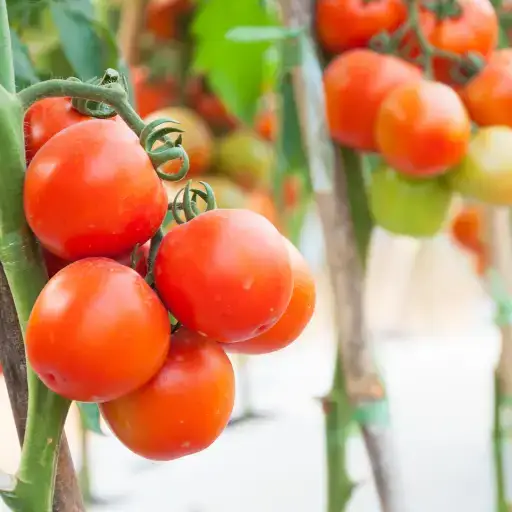
What is the recommended amount of Epsom salt for tomatoes?
The recommended amount of Epsom salt for tomato plants depends on their stage of development. For seedlings, it is advisable to dissolve a spoonful in a gallon of water and apply every two weeks. When the plant has started growing, you can change it to one tablespoon per gallon of water and apply it every four to six weeks. To increase fruit production, when flower buds appear, use one tablespoon of Epsom salts per foot height of the plant. Always ensure that you have mixed it well and put it straight into the soil so your crops take up all the nutrients.
When should epsom salt be added?
This is vital to ensure maximum benefits from adding Epsom salt to your tomato garden. Below are some suggested times and supported technical specifications:
- During the Seedling Stage, Use Epsom salt when the seedlings are about two or three inches tall. This will enhance rooting and nutrient uptake.
- When Transplanting: When transplanting young plants into their permanent beds, add a little bit of Epsom salt to each planting hole. This reduces shock during transplantation and improves growth rate, which is achieved by using approximately one tablespoon per plant.
- At Flowering Stage: The main application should be made at flowering onset where first sign by applying an inch (or –inch) length tablet of five hundred milligrams magnesium gluconate per thirty pounds body weight with 30mg elemental magnesium concentrations would boost flower and fruit developments thus ensuring enough amounts of sulfur and magnesium elements necessary for best plant growth in days leading up until harvest day.
- After Heavy Rain: If heavy rainfall occurs, nutrients like magnesium can be leached from the soil, but this type of situation may call for using more than normal rates, such as putting epsom salts after such a rain incident followed by regular watering activity without any further additions, like fertilizers.
These timings allow gardeners to make the best use of Epsom salt, which ultimately means healthier plants and more tomatoes.
How can epsom salt be dissolved for convenient usage?
To dissolve Epsom salt so that I can easily apply it to my crops, I usually mix it with water. As a rule of thumb, mixing one tablespoon of Epsom salt and a gallon of water works well. After all the grains are dissolved completely, this solution may be stirred gently but steadily until they are gone from sight. It is simple: once the mixture has been prepared, you only pour it around the base of each plant, taking care not to splash any on their leaves. In addition to enhancing nutrient absorption into plants’ roots, this method also eliminates soil accumulation, leading to healthier growth by avoiding the build-up of salts within soils themselves.
What are the Benefits of epsom salt for tomatoes?
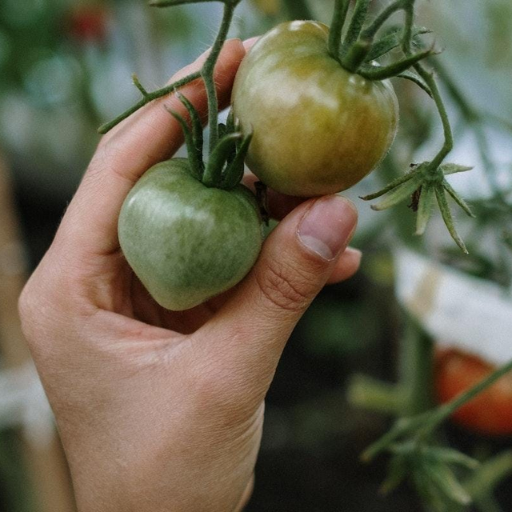
How does Epsom salt improve fruit production?
Epsom salt enhances tomato fruit production by supplementing some essential nutrients usually missing from the garden soil. The magnesium content in Epsom salt is crucial for photosynthesis, which helps promote plants’ general health and strength. By using Epsom salts regularly, I have seen my tomatoes produce more prominent and more fruits. Still, it contains sulfur, which aids in oil formation and sugar synthesis, thus enhancing the taste and flavor of the fruit. In summary, adding Epsom salt to my cultivation program has dramatically improved my tomatoes’ yield and taste experience.
What effect does magnesium in epsom salt have on tomato plants?
The impact of magnesium from Epsom salts on tomato plants is remarkable since I have found it helpful as far as gardening is concerned. It helps to absorb necessary elements such as phosphorous and nitrogen which are essential for vigorous planting growth. Additionally, this nutrient strengthens cell walls, thereby enhancing photosynthesis that naturally leads to increased productivity levels of fruits while improving the overall health status of tomato plants. As a result of this phenomenon,, optimized Epsom Salt supplementation can increase the speed at which they grow while making them more flavorful than ever.
Can epsom salt help with blossom end rot?
Yes, I’ve discovered that epsom salts can be used to prevent blossom end rot in tomatoes. This condition commonly arises due to insufficient calcium or irregular watering, but it can be dealt with by ensuring even nutrient provision for the plant’s well-being. Magnesium within epsom salts does not contain calcium itself. Still, it aids in the better absorption of other nutrients, facilitating movement into roots from where they get watered up by capillary action till leaves gain maximum benefit from sun energy via photosynthesis. With this, uniform moisture levels combined with supplements like Epson salts enabled me to obtain healthier crops with fewer incidences of blossom end rot. This has been one of the best ways to reduce these problems within my gardening schedule.
Is epsom salt Safe for All Types of Plants?
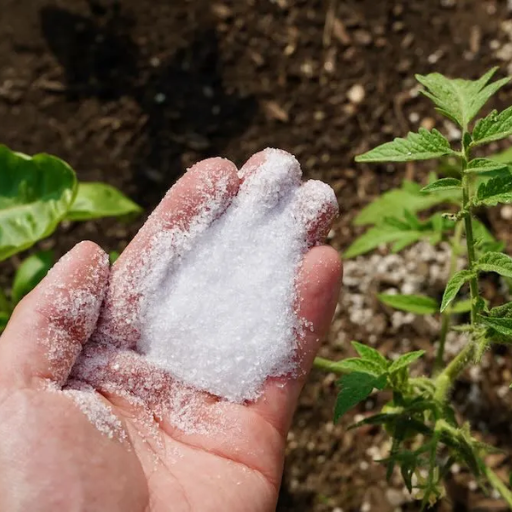
Which plants gain the most from epsom salt?
As per my experience, Epsom salt significantly impacts several plants. I realized that leafy greens like spinach and lettuce reacted well to increased magnesium levels by growing with lush green leaves. In addition, treating Epsom salt in peppers and roses has improved the plant’s flowering and development by boosting its ability to absorb nutrients and bloom. Even fruit trees such as apples and citrus benefit from Epsom salts, which help in fruit production and general health. These findings align with what I have seen on multiple gardening websites that consistently highlight these plants as critical beneficiaries of supplemental magnesium.
Are there any plants that shouldn’t receive epsom salt?
However, despite being good for many plants, a group of species may not respond well to the application of this compound, according to my observation. For example, some succulents and cacti that thrive best under low-magnesium conditions may not require additional magnesium at all. Adding Epsom salts to these plants can create nutrient imbalances that are detrimental rather than helpful.
On another note, heavy feeders like corn or certain legumes may experience stunted growth when using Epsom salts because they prefer a balanced ratio of nutrients rather than an excess one. Lastly, it is crucial to know the pH of the soil; if it is already acidic, then adding Epsom salt will only worsen matters. The consensus among top-reviewed gardening sites indicates that careful consideration should be given to the specific needs of a plant as well as the environment in which it grows before deciding whether or not to use Epsom salt, which usually contains 10% Manganese Sulfate for effective delivery without being harmful.
How do you apply epsom salt for plants effectively?
When applying Epsom salts correctly on my crops, I utilize simple steps since they are used in farming. I first make a solution by dissolving between one and two tablespoons of Epsom salt in a gallon of water. I get a liquid feed that I can apply without struggling. After every four to six weeks, plants are irrigated with this mixture while ensuring that it is not overused. Additionally, for plants that need topical application, mix Epsom salt into the soil at the base of the plant during planting or transplanting. It’s my responsibility to gauge how my crops react to ascertain their frequency or amount based on their unique requirements and stage(s) of development. As such, I can optimize magnesium benefits, avoiding any possible side effects.
How to Test Soil for magnesium deficiency?
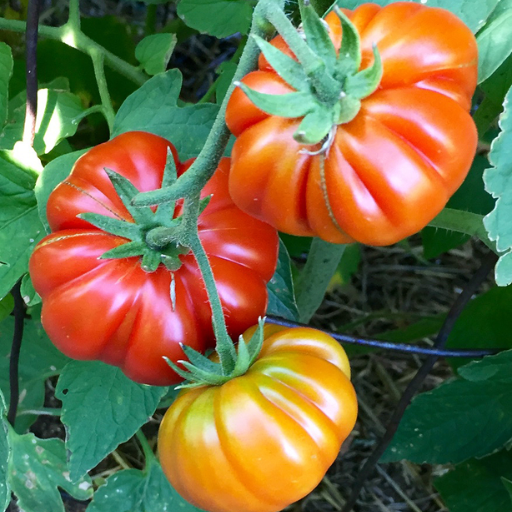
What are the signs that tell you you need Epsom Salt?
One of the primary indications for this is yellowing leaves, which can be a sign of magnesium shortage when they have green veins and white tissue around them. In addition, my plants may exhibit stunted growth or poor fruit development due to deficiencies in some essential nutrients, including magnesium. Also, sometimes, leaves curl or brown at the edges to show a lack of the required nutrients. Looking out for such symptoms helps me decide whether to add Epsom salt for their healthiness.
How does a soil test inform the usage of epsom salt?
A soil test is essential because it helps me understand what specific nutrient contents are in my garden’s soil. From soil testing, I can see where there might be a problem with such things as magnesium levels. Additionally, as determined by analysis, low Mg concentration strengthens my choice to apply Epsom salts since this will increase nutrient availability. In addition, pH readings from soil analysis help check on nutrient absorption rates; whether they are too high or too low, my plants may not be able to take up enough magnesium even when it is present. This means that by comparing the soil test results with plant health observation, I will adjust how I use Epsom salt so that I can apply a sufficient amount at the right time, thus promoting maximal plant development.
Can epsom salt be used as a fertilizer?
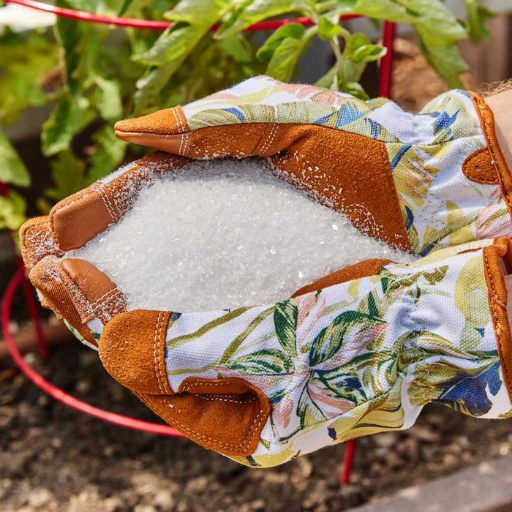
What is the comparison between epsom salt and ordinary fertilizers?
When I compare Epsom salt to regular fertilizers, I find that Epsom salt mainly gives magnesium and sulfur, which are very important for photosynthesis and general plant health maintenance. A range of nutrients are generally in standard fertilizers, including nitrogen, phosphorous, and potassium. According to my research on top gardening websites, Epson salt can enhance the efficiency of regular fertilizers by increasing nutrient uptake, but it cannot replace them.
Most Important Technical Parameters:
- N-P-K Ratio: Normal fertilizer has an N-P-K ratio for nitrogen, phosphorus, and potassium contents (e.g., 10-10-10) associated with a balanced diet. Epsom salt (magnesium sulfate) has no N-P-K values; however, it contains approximately 10% magnesium and 13% sulphur.
- Absorption Mechanism: Epsom salts improve plants’ capacity to absorb nutrients, especially when soils have low magnesium levels. Due to this synergy, when used together with NPKs, they may lead to healthier plants.
Use around three standard paragraphs at least to summarize what you have experienced or learned about this product since starting using it.
What elements do epsom salts give the soil?
During my top gardening website surveys, I discovered that Epson’s salt gives two primary nutrients: magnesium and sulfur. Magnesium is crucial for photosynthesis because it helps convert sunlight into energy, while sulfur helps make amino acids and proteins necessary for plant growth and development. In addition, overall plant health can be improved through assistance from other nutrients improved by magnesium. Hence, adding Epsom salt should be helpful when there are deficiencies of elements in the soil.
Best Practices for Using epsom salt in the garden
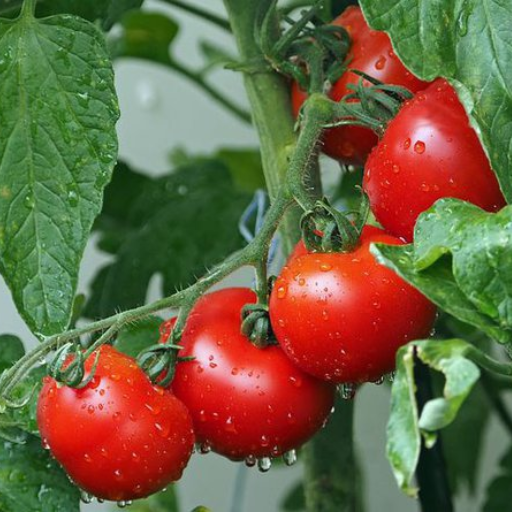
How much does one apply Epsom salt?
For many years, I have used Epsom salt in my garden, and I must say that according to various gardening resources, I apply it every 4-6 weeks throughout the growing season. This way, there is always enough magnesium and sulfur for the plants to take up as they grow. Furthermore, a good time to reapply Epsom salt is right after heavy rains or when the soil has been heavily irrigated so that minerals washed away can be replaced. But before adding magnesium to the soil, I always perform a soil test.
Should you spread or spray epsom salt?
From what I know and learn from top gardening websites, both methods of applying Epsom salts – around plant bases and as foliar sprays – are effective with different goals in mind. When used around plant bases, it allows direct absorption of magnesium and sulfur through their roots, which is healthy for the whole plant. On the other hand, if plants display some nutrient deficiency signs, the foliar spray could be instrumental since it allows rapid nutrient intake. In my case, both methods give me confidence that my crops will not run short of nutrients at this time when they need them most.
What should be the best ratio for watering with epsom salt?
Based on my readings from leading gardening sites on the web, when watering my plants, I usually use 1-2 tablespoons of Epsom salts per gallon of water as needed. Since this balance provides for a moderate application rate of Mg and S without overwhelming plants with these essential nutrients, blending into water should dissolve perfectly to ensure that all such elements penetrate well enough inside our soils during application processes. As such, this technique has worked well within my garden, especially concerning leafy vegetables like kale and flowering ones seeking nutritional boosts during growth periods.
Reference sources
Frequently Asked Questions (FAQs)

Q: How much Epsom salt should I use for tomato and pepper plants?
A: One tablespoon of Epsom salt per gallon of water is recommended for tomato and pepper plants. This solution can be applied to the soil or as a foliar spray.
Q: Can Epsom salt help with chlorophyll production in tomato and pepper plants?
A: Epsom salt can help enhance chlorophyll production in tomato and pepper plants, which is essential for photosynthesis and overall plant health.
Q: Is there a specific time to apply Epsom salt to my tomato and pepper plants?
A: Epsom salt can be applied anytime you shop for garden care products, but it’s particularly beneficial during the growing season. For optimal results, use it every two to four weeks.
Q: What is the best way to apply Epsom salt to the soil for tomatoes and peppers?
A: The best way is to mix one tablespoon of Epsom salt directly into the soil around your tomato and pepper plants. This method ensures that the plants can absorb the nutrients effectively.
Q: How does Epsom salt affect the germination of tomato seeds?
A: Adding Epsom salt to the soil can promote better germination by providing magnesium, which helps seed sprouting and overall plant vigor.
Q: Can too much Epsom salt harm my tomato and pepper plants?
A: Yes, using too much Epsom salt can lead to nutrient imbalances in the soil. Measuring the dosage carefully is essential, typically not exceeding one tablespoon of Epsom salts per gallon of water.
Q: What happens if I don’t use Epsom salt for my tomato and pepper plants?
A: If you don’t use Epsom salt, your tomato and pepper plants may experience magnesium deficiency, leading to poor growth and reduced yields. However, many plants can thrive without it if soil conditions are optimal.
Q: What is Epsom salt, and why is it suitable for tomato and pepper plants?
A: Epsom salt is a natural mineral composed of magnesium sulfate. It benefits tomato and pepper plants because magnesium is a critical nutrient that aids chlorophyll production and overall plant health.
Q: How often should I water my tomato and pepper plants with Epsom salt solution?
A: You should water your tomato and pepper plants with the Epsom salt solution every two to four weeks, depending on the plant’s needs and specific soil conditions.







